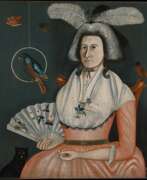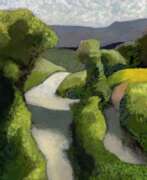Wood carvers 19th century


Hezekiah Augur was an American sculptor and inventor. He was self-taught and, unlike many other American sculptors of the 19th century, spent his entire career in New Haven.
Hezekiah Augur was the son of a carpenter and learned the woodcarving trade early on. He later invented a lace loom and a machine for carving piano legs. He then switched to marble.
Hezekiah Augur was a member of the Connecticut Academy of Arts and Sciences.
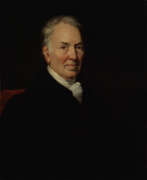

Thomas Bewick was an English wood-engraver and natural history author. Early in his career he took on all kinds of work such as engraving cutlery, making the wood blocks for advertisements, and illustrating children's books. He gradually turned to illustrating, writing and publishing his own books, gaining an adult audience for the fine illustrations in A History of Quadrupeds.


Karel Brož (Russian: Карл Осипович Брож) was a Czech and Russian artist, renowned for his detailed illustrations and watercolors. Born on November 25, 1836, in Prague, he studied at the Vienna Academy of Fine Arts and later moved to Russia, where he became a prominent illustrator for various publications, including "Vsemirnaya Illustratsiya."
Brož's work is characterized by its meticulous attention to detail and vibrant depictions of historical and everyday scenes. His illustrations, particularly for Russian periodicals, captured the essence of 19th-century life and remain highly regarded in art circles.
Collectors value Brož's pieces for their historical significance and artistic quality. His illustrations have been featured in numerous exhibitions and are part of prestigious collections. For those interested in historical illustrations, Karel Brož’s work offers a unique glimpse into the past.
Sign up for updates on new product sales and auction events related to Karel Brož to stay informed about the latest opportunities to acquire his work.
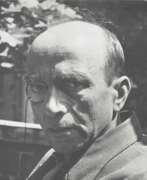

Paul Gangolf, real name Paul Löwy, was a German expressionist painter, lithographer, woodcarver and journalist.
Paul was born into a Jewish family, began his work with articles in magazines on political topics, using the pseudonym Gangolf, during the First World War he served in various troops.
The peak of Paul Gangolf's creative activity came in the 1920s, when he worked in lithography, published and exhibited in Berlin, London and Paris.
After the National Socialists came to power, he was arrested and taken to the Esterwegen concentration camp, where he was murdered. Already after his death, in 1937, as part of the "Degenerate Art" campaign, Gangolf's paintings were confiscated from museums in Nazi Germany and most were destroyed. Surviving works by the artist can be found at the Museum of Modern Art in New York and others.




Walter Helbig is a German and Swiss painter, graphic designer and woodcarver. He works in Dresden on church paintings. Helbig participated in the founding and first exhibition of the "Neue Secession" in Berlin in 1910. Helbig took part in the first Modern Bund exhibition in 1911 in Lucerne and in the second, larger one, at the Kunsthaus in Zurich. In 1914, some painters from the vanished “Modern Bund”, including Helbig, took part in the first Dada exhibition at the Galerie Coray in Zurich. Helbig is also represented in the third Dada exhibition and contributes to the magazine Der Zeltweg 8 but does not participate in the activities of the Dadaists. In 1919, he was one of the signatories of the “manifesto of radical artists” 9 in Zurich, and joined the “November group” in Berlin. Helbig lived in Zurich from 1916 to 1924 and in 1916 became a member of the GSMBA (Society of Swiss Painters, Sculptors and Architects), in which he regularly participated. Since the First World War, his artistic work has turned to religious and mythical subjects. In 1924 Helbig, like many other artists, moved to Ascona due to the low cost of living and founded the movement Der Große Bär. During this time, Helbig painted landscapes, still lifes and portraits. Walter Helbig had his first major solo exhibition in Zurich in 1948 and became a member of the Association of German Artists in 1952. After the Second World War, he also followed the artistic currents of the time, abstract expressionism and experimented with informal art in the 1960s.


Sergey Timofeyevich Konenkov (Russian: Серге́й Тимофеевич Конёнков) was a Russian and Soviet sculptor, often hailed as "the Russian Rodin." Born into a peasant family in 1874 in the Smolensk region, he pursued his passion for art, studying at the Moscow School of Painting, Sculpture and Architecture, and later at the Academy of Arts. Konenkov's work was deeply influenced by his roots, leading to the creation of sculptures that blended Russian folklore with Hellenic and Russian culture.
Konenkov's career took a significant turn when he moved to the United States in 1923, where he stayed for 22 years. This period was marked by his exploration of biblical themes, creating renowned works that depicted Jesus Christ, Christian prophets, and apostles. His notable commission of a sculpture of Albert Einstein by Princeton University highlights his prominence during this period. Upon his return to the USSR under Stalin's directive, Konenkov continued his artistic endeavors, receiving numerous accolades including the golden star of the Hero of Socialist Labour and the order of Lenin.
His legacy includes a vast collection of works, with some of his most famous sculptures housed in the Tretyakov Gallery and the museum dedicated to his works in Smolensk, established posthumously in 1970. The museum's foundation was laid with forty of his creations, showcasing his significant contribution to Russian and Soviet art.
For collectors and experts in art and antiques, Konenkov's sculptures represent a unique fusion of cultural narratives and a testament to his innovative approach to sculpture. His works continue to be celebrated for their depth, creativity, and influence on the art world.
To stay updated on sales and auction events related to Sergey Timofeyevich Konenkov's work, sign up for updates. This subscription ensures you're informed about the latest opportunities to own a piece of Russian and Soviet art history.
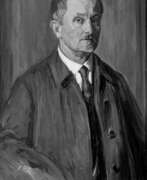

Wilhelm Laage was a German painter, graphic artist, engraver and woodcarver.
Laage attended the Hamburg School of Crafts and the Art Academy in Karlsruhe, and in 1896 began working with woodcuts and lithography. In 1904 Lage took part in exhibitions in Vienna and Dresden, in 1914 he was awarded the Villa Romana Prize, the Honorary Prize of the City of Leipzig and the State Medal at the International Graphic Exhibition in Leipzig. Wilhelm Laage was a member of the German Artists' Association.


Lucien Pissarro was a French painter, graphic artist and woodcutter, representative of Pointillism. Son of Camille Pissarro. Since 1890, he lived and worked in England.
Lucien Pissarro initially studied painting under his father. He later developed his own artistic style influenced by the neo-impressionist techniques of Georges Seurat and Paul Signac. Like other Neo-Impressionist painters, Pissarro used broken strokes and divisionism techniques to create light and vivid effects.
The subjects of Pissarro's paintings often included landscapes, rural scenes and coastal vistas, reflecting his love of nature and the countryside. He was particularly fond of capturing the effects of light and atmosphere in his paintings, using a subtle and harmonious colour palette.


Edgard Tytgat is a Belgian painter, engraver, illustrator, draftsman, etcher, watercolourist and wood engraver. As an engraver and xylographer, he illustrated numerous works. His painting, in a style inspired by Post-Impressionism, is often described as naive painting, with scenes of daily life, interiors, fairs, lovers, but not devoid of sweet poetry. From 1950, he approached the representation of mythological legends sometimes bathed in a certain eroticism. Edgard Tytgat has participated in numerous exhibitions, both personal and collective, in Belgium and abroad.


Félix Vallotton, a Swiss-born French graphic artist and painter, is recognized for his distinctive woodcuts and paintings of nudes and interiors. Vallotton's journey into art began in Paris, where he attended the Académie Julian, fostering a unique style that broke from traditional norms. His early works, characterized by extreme realism, were showcased at the Salon des Artistes Français and the Paris Universal Exposition of 1889. This period also marked Vallotton's encounter with Japanese prints, notably those by Hokusai, profoundly influencing his artistic direction.
In 1892, Vallotton joined Les Nabis, a group of avant-garde artists including Pierre Bonnard, Maurice Denis, and Édouard Vuillard, which led to a significant evolution in his style. His paintings from this era, such as "Bathers on a Summer Evening" and "Moonlight," exhibited at the Kunsthaus Zürich and the Musée d'Orsay respectively, reveal a departure from realism towards a more symbolic and abstract representation. The works from this period are characterized by flat areas of color, hard edges, and simplified details, mirroring the style he developed in his woodcuts.
Vallotton's woodcuts, like "Intimités" (Intimacies), a series published in 1898, showcased his mastery in capturing the nuances of human relationships, particularly the tensions between men and women. His graphic art, which included depictions of domestic scenes, bathing women, and street crowds, was not just celebrated in Europe but also influenced artists like Edvard Munch, Aubrey Beardsley, and Ernst Ludwig Kirchner.
Towards the end of his career, Vallotton continued to innovate, combining elements of realism and abstraction, evident in paintings like "La Malade" (The Sick Girl) and "Clair de lune" (Moonlight). His works remain a testament to his ability to merge technical precision with a poignant exploration of human emotions and societal themes.
For art collectors and experts, Vallotton's body of work offers a rich and diverse exploration of early 20th-century art movements, especially his role in the development of modern woodcut techniques and his contribution to the Nabis movement. His works are a study in the fusion of realism and symbolism, marked by a distinctive style that makes his art enduringly relevant and compelling.
For those interested in discovering more about Félix Vallotton and staying updated on related product sales and auction events, signing up for updates is a great opportunity. This subscription will exclusively alert you to new sales and events pertaining to Vallotton's works, ensuring you remain informed in the dynamic world of art and antiques.










